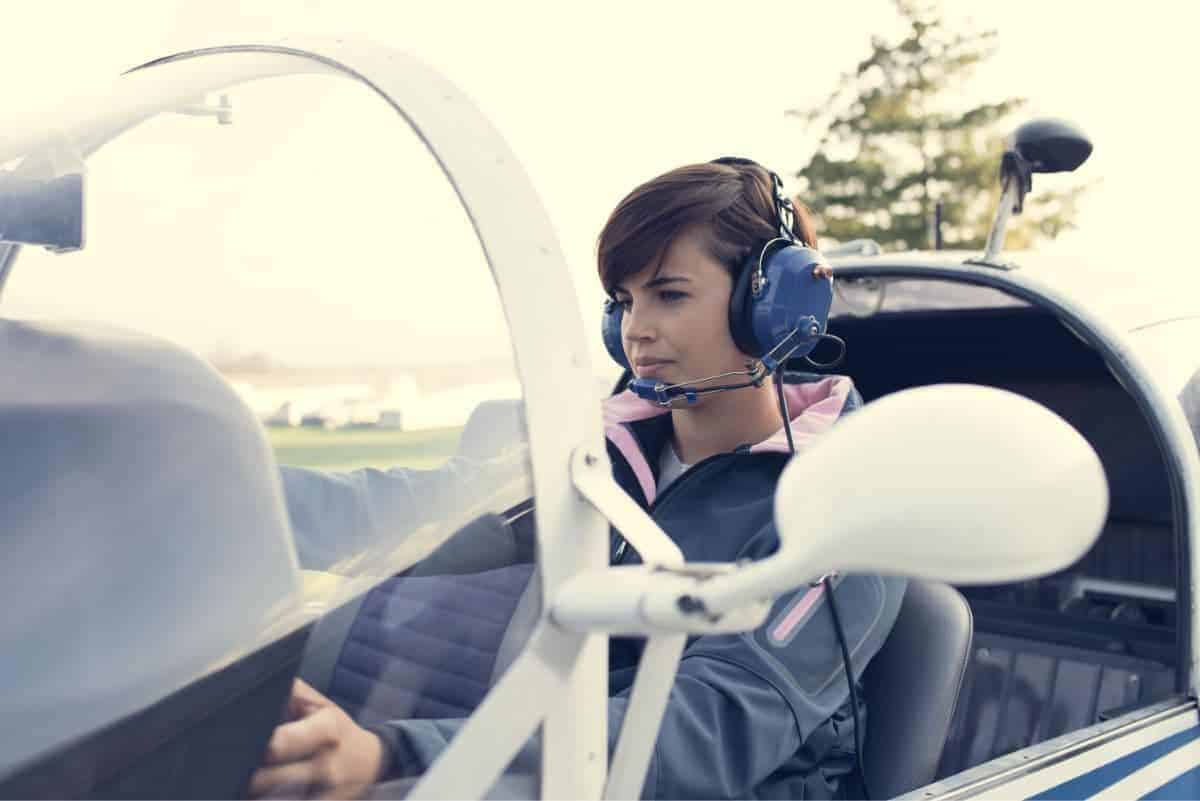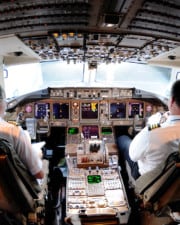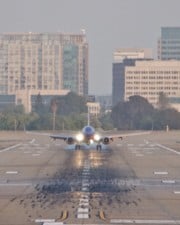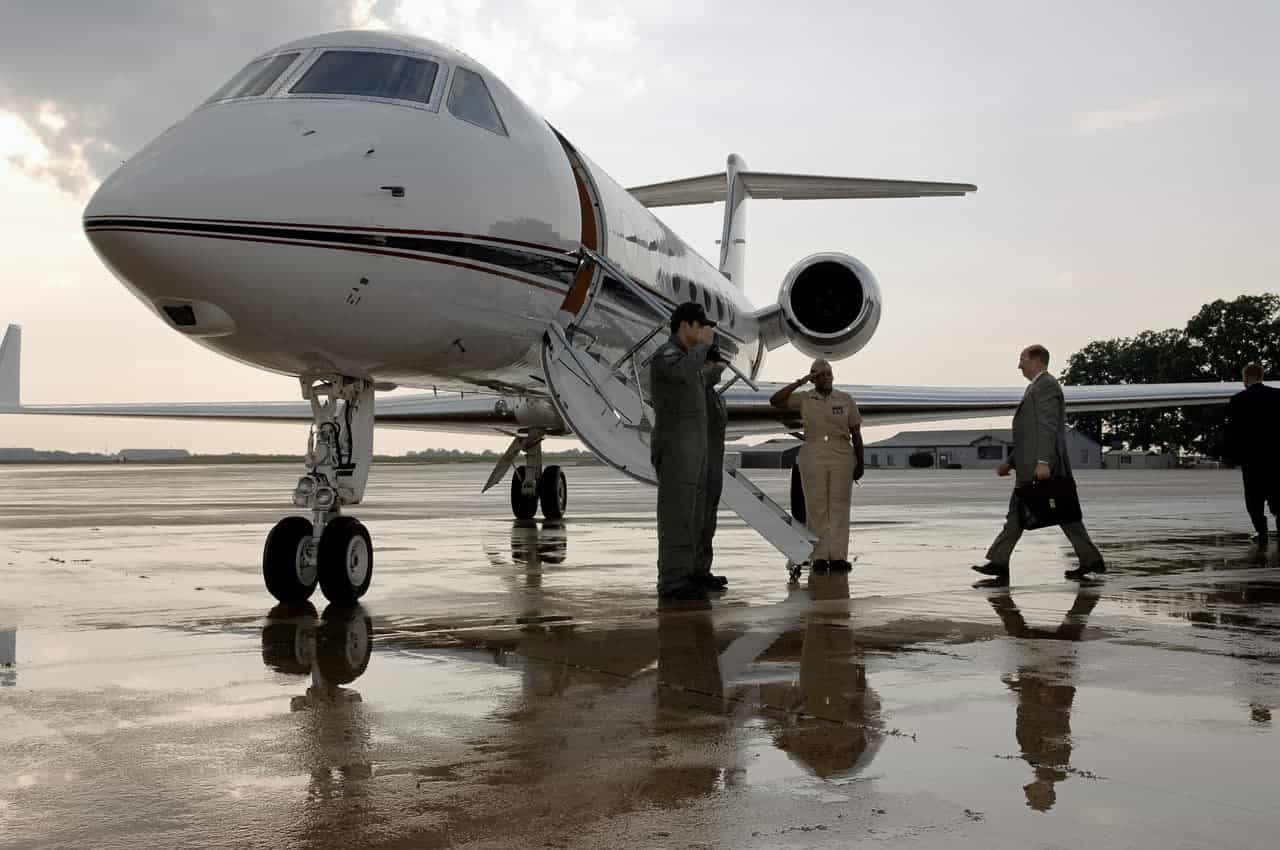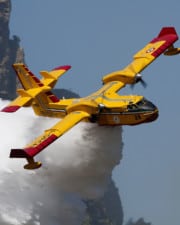One of the most fundamental concepts in aerodynamics is the concept of angle of attack, also called AOA. Aerodynamics is a complex subject and there are many concepts that go into understanding precisely what the AOA is and why it is essential.
The angle of attack (AOA) is the angle formed between the wing and the relative wind. At first glance, it might seem to be the same as how high the airplane is pitched up, which airline pilots refer to as the “deck angle.” But AOA is a little more complicated than that.
The Basics of Lift
The shape of a wing is called an airfoil. Airfoils have a curved upper surface that accelerates the air flowing over the top of the wing. This creates an area of lower pressure above the wing, which is how it generates lift.
Wings also generate lift as the air hits their lower surface and bounces off. Newton’s Third Law of Motion states that there is an equal and opposite reaction for every action. As air hits the wing bottom and deflects downward, a lifting force is created upwards.
Both of these factors require air to be flowing around the wings. This is why an airplane can’t take off when stationary; it must build up speed on the runway. As the airflow over the wings increase, lift starts to be produced.
The air passing the wing is called the relative wind because it is related to the airplane’s flight path. It is opposite the airplane’s direction of travel.
As the wing is pitched higher, more and more air gets deflected downward. The amount of upper curve relative to the airflow also increases. The net result is more lift.
What is the Angle of Attack?
The definition of the angle of attack is the angle between the wing’s chord line and the relative wind.
The chord line is an imaginary line that runs between the leading edge and the trailing edge of a wing. The relative wind is the airflow that moves equal and opposite the airplane’s flight path.
The pilot controls the angle of attack by pitching the airplane up or down. If the aircraft is pitched up, the angle of attack increases and the wing makes more lift. If the pilot pitches down, the angle of attack decreases and less lift is produced.
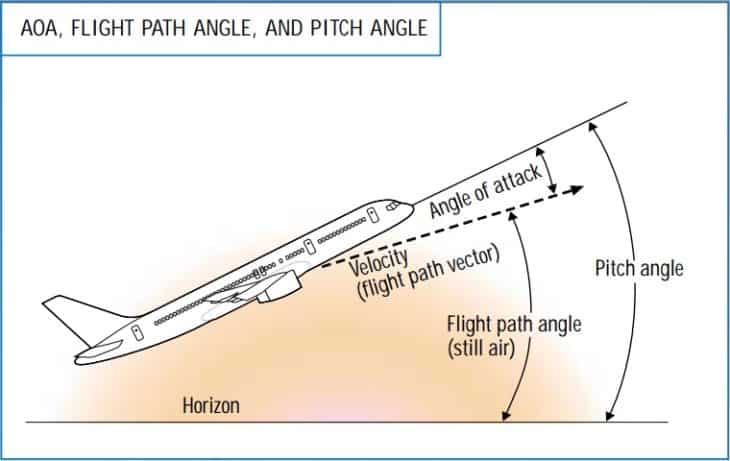
Flight Path and Pitch Angle vs. AOA
The plane’s flight path is the angle between its direction of flight and the horizon. If you’re standing outside the plane, viewing it from a distance, the flight path is easy to see.
Inside the cockpit, the flight path is seldom referenced. The pilots know the flight path they aim to fly, but they do so by targeting specific airspeeds and pitch angles.
The pitch angle of the plane is defined as the angle aircraft’s longitudinal axis makes with the horizon. This is also described as the deck angle by airliner crews. It’s the reference used by pilots for visual flight, and it is beneficial for setting up and learning basic flight maneuvers. In upset recovery, however, it can be a confusing indicator.
Both of these are visual references that use the horizon. Of course, the wing does not “see” the horizon; it only “sees” the relative wind. Therefore, only the angle of attack is relevant when describing the wing and its production of lift.
Angle of Incidence
Many people confuse the angle of attack with the angle of incidence, which is a design element in aircraft. It is the measurable angle between the plane’s longitudinal axis and the chord line of the wing. In short, it is the built-in angle at which the wings are mounted; the pilot cannot control it.
The Angle of Attack Changes with Airspeed
The two main ways a pilot controls the amount of lift a plane makes is by adding airspeed or by increasing the angle of attack. If the aircraft is flying straight and level, then the amount of lift must equal the amount of the airplane’s weight (plus all of its contents).

Let’s use the most common training aircraft in the world as an example. A Cessna 172 Skyhawk cruises at about 110 knots. At that speed, the plane’s pitch angle is roughly level with the horizon.
But what if the pilot needs to slow to 50 knots? If they reduce power and let the aircraft decelerate, the wing will produce less lift, so the plane will begin depending. To maintain altitude as the plane slows, the pilot must pitch up to increase the angle of attack.
On the same note, if the pilot wants to operate at full throttle, the plane will climb as airspeed builds. To maintain their altitude, the pilot will have to pitch down and reduce the angle of attack.
AOA in Steep Turns
The amount of lift a wing needs to create for level flight is not always constant. Some flight maneuvers increase the load factor by adding G-forces to the aircraft. When this happens, the wing may be called on to make double or triple the lift that it does in straight and level, unaccelerated flight.
In order to not lose altitude in these situations, the pilot must increase their angle of attack or speed up. But they must be careful doing so since airframes are only designed to take a certain amount of G-force.
The most common example of this is when planes are banked into a turn. During turns, the load factor increases. This makes the plane “feel” heavier than it is, and the wing must make more lift to maintain level flight.
So, to properly execute a steep turn, the pilot will have to do four things simultaneously. They must roll the aircraft into the desired bank angle, and they must apply rudder pressure to yaw it into the turn. The rudder is also used to balance the horizontal component of lift and centripetal force, thereby keeping the aircraft coordinated.
The last two things a pilot must do involve the angle of attack. They must pitch up as they roll into the turn to increase the AOA and maintain their altitude. The increased tail-down force and induced drag from doing this will slow the aircraft, so they must also add power to keep their airspeed.
The Critical Angle of Attack
The angle of attack cannot be increased indefinitely. At some point, the air stops flowing smoothly over the upper surface of the wing. This results in a sudden decrease in the amount of lift being produced. The point at which this happens is called the critical angle of attack.
When the critical angle of attack has been exceeded, the wing has stalled. While many people wrongly believe that a stall results from flying too slowly, the truth is that a stall can occur at any speed and any point during the flight. Even at high airspeed, if the wing exceeds the critical angle of attack, it will stall.
Accidentally stalling an aircraft can be deadly. A stall is easy to recover from as long as there is enough altitude to do so. But in the traffic patterns near airports, stalls and spins leading to loss of aircraft control continue to be the leading cause of accidents.
Knowing how the aircraft behaves in a stall and recovering from one quickly is foundational pilot training.
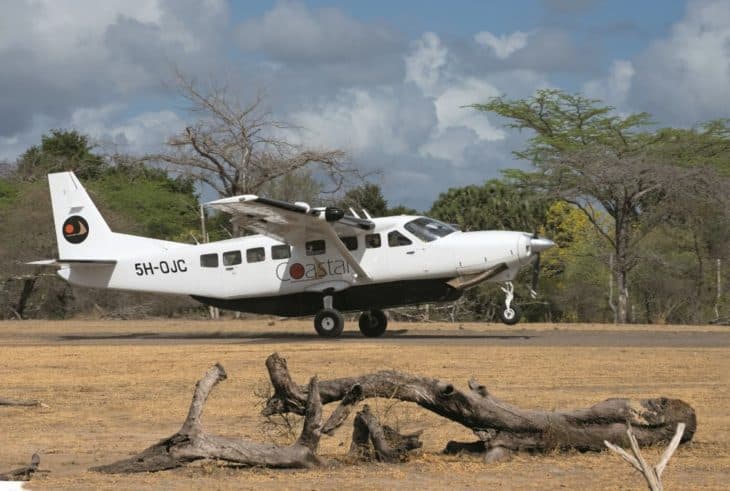
AOA vs. Pitch Angle in Stall/Spin Recovery
The relative wind, and therefore the AOA, is sometimes hard to visualize. The key is to think about exactly what “equal and opposite the flight path” really means. It is relatively easy to imagine what it looks like during routine flight maneuvers like straight and level, climbs, and descents.
What if the plane is in an unusual flight attitude? The most dramatic example of this is the example of a spin.
A spin occurs when one wing becomes more deeply stalled than the other. Outside of airshow stunt planes, this is an abnormal flight condition and one that must be avoided.
During a spin, the plane spirals towards the ground, usually in a nose-low attitude. The spin happens quickly, even though forward airspeed is very low. During a spin, the relative wind is basically coming from below the aircraft as it sinks toward the ground. If you visualize the angle of attack, it is substantial.
To successfully recover from a spin the pilot must do something that seems unnatural. All stalls recoveries start by lowering the nose to reduce the angle of attack. And in a spin, even though the plane’s nose is pointed down, it must be pointed even further down.
Measuring the AOA
Traditionally, stalls and stall recovery techniques have been taught to pilots by teaching them to monitor their airspeed during various phases of flight carefully. The result is that the concept of angle of attack is sometimes harder to understand than it needs to be.
Recently, training aircraft and instructors have begun using angle of attack indicators inside the airplane. These instruments show the wing’s AOA and provide a graphical representation of just how close the wing comes to stalling during various flight maneuvers.
AOA indicators have been fixtures in large aircraft for decades. Their introduction into general aviation airplanes is a welcome safety feature and an excellent tool for pilots. Several companies are now making inexpensive units, like Garmin’s GI-260.
References ▾
Related Posts



